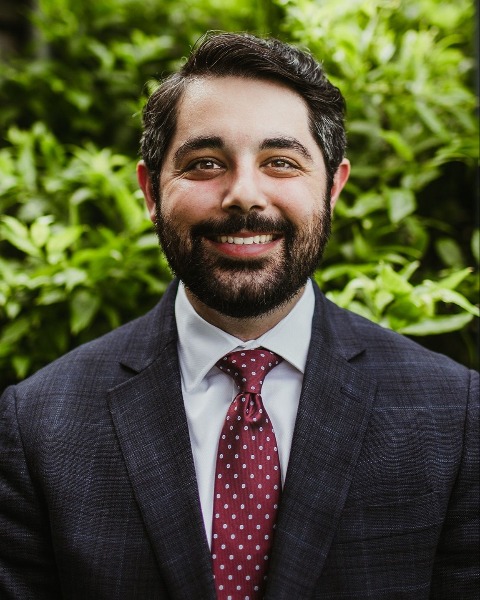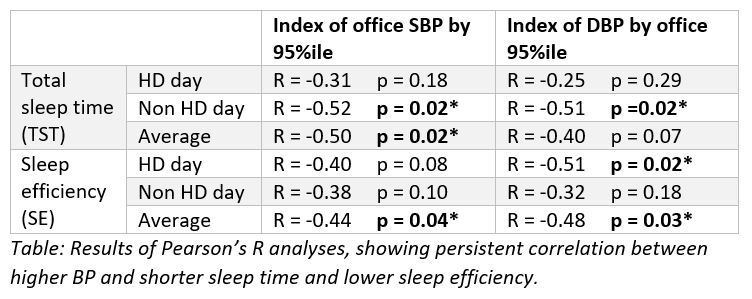Nephrology
Session: Nephrology 2
23 - Poor sleep efficiency and shorter sleep duration associated with increased blood pressure in pediatric hemodialysis patients.
Saturday, May 4, 2024
3:30 PM - 6:00 PM ET
Poster Number: 23
Publication Number: 23.1560
Publication Number: 23.1560

Jonathan S. Chawla, MD (he/him/his)
Assistant Professor
Baylor College of Medicine
Houston, Texas, United States
Presenting Author(s)
Background: Cardiovascular disease (CVD) is the leading cause of death in pediatric patients with end-stage kidney disease (ESKD). Hypertension (HTN) is an important modifiable risk factor for CVD in this population. Poor sleep is associated with HTN in adults and pediatric patients without other comorbidities. We previously used actigraph accelerometry (ATG) to demonstrate high prevalence of poor sleep efficiency (SE) and inadequate total sleep time (TST) in a cohort of ped hemodialysis (HD) pts.
Objective: We hypothesize poor sleep as detected by ATG will be associated with elevated BP in pediatric patients on HD.
Design/Methods: In this prospective cohort study, pts 8-18 years on HD for > 3 months were asked to wear an ActiGraph™ accelerometer on non-dominant wrist for one week, logging sleep/wake times daily. Oscillometric BP obtained pre-, mid-, & post-HD and indexed to 95%ile. Pts considered hypertensive if pre-HD BP was >95% for age, sex, and height per published AAP standards. Central BP taken with SphygmoCor® EM3 and compared to published standards and cutoffs for age, sex, and height.
Results: 21 pts completed ATG. 62% male, mean age 15±2.9yr, mean HD vintage 1±1.1yr, mean BMI Z-score -0.63±1.4. All pts had three 240min HD sessions per week. 43% (n=9) met AAP definition of HTN per pre-HD oscillometric BP. Central BP was elevated in 48% (n=10). Pre-HD BP persistently correlated with shorter TST and lower SE by Pearson’s R (see Table). Paired T-tests comparing pts with and without HTN by office BP showed that pts with HTN slept 1.65hr less than pts without HTN on nights following HD (p=0.035).
Conclusion(s): This is the first study assessing sleep quality and its association with HTN in pediatric HD patients, using actigraphy to provide objective measures of sleep quality and duration. The significant association of shorter TST and lower SE with higher BP represents actionable changes that can reduce CV mortality by improving sleep hygiene and identifying patients that warrant polysomnography to assess for obstructive sleep apnea.

